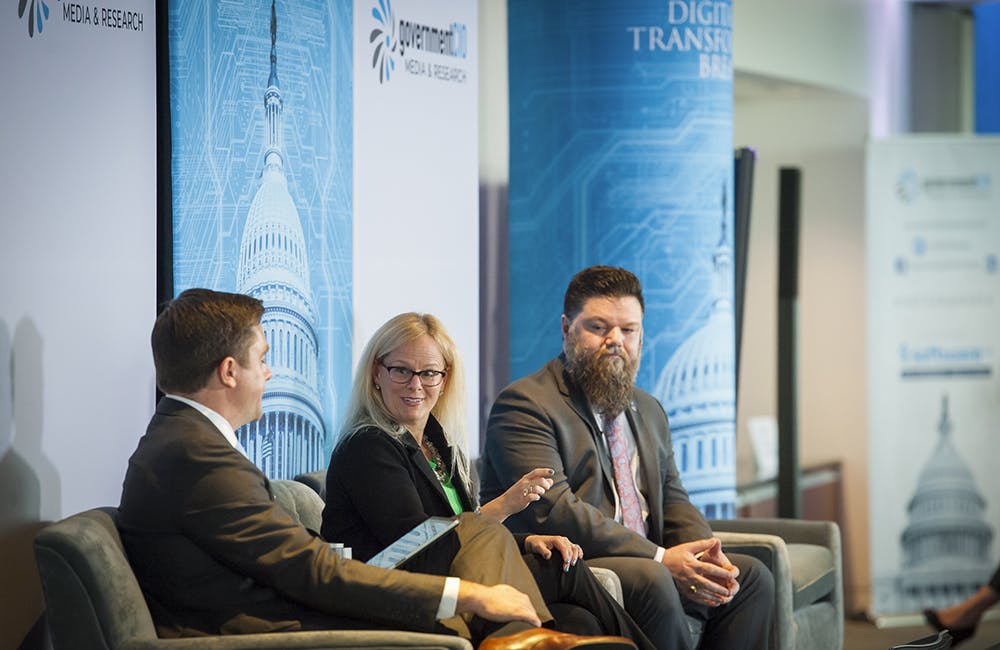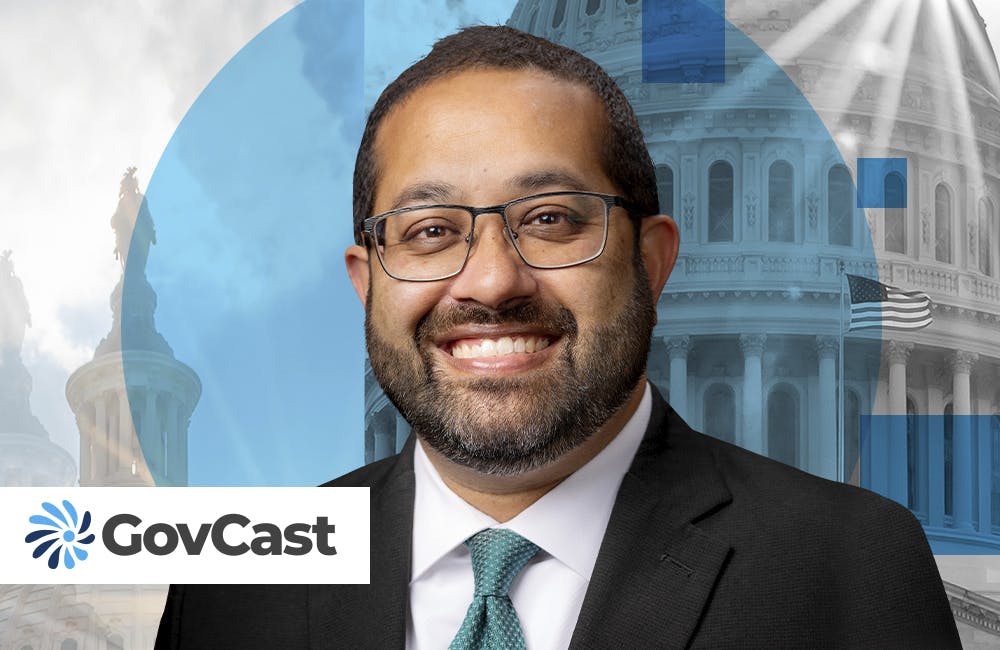VA Puts Trust, Human-Centered Design at Core of Health Care Transformation
The design principles improve technology for veterans and those who serve veterans, such as with the agency’s VA.gov relaunch.

Health care technology represents the potential to transform lives nationwide, ensuring that no matter where you are, you can connect with health care professionals when needed and get high-quality care without a long-term wait. At the Department of Veterans Affairs, this potential is not lost on the IT experts, who are focused on designing that technology to help veterans and ensure they receive the high standard of health care they deserve.
“We in IT don’t like to build IT for IT’s sake,” said VA Office of Information Technology Principal Deputy Assistant Secretary Dominic Cussatt at the Veterans Digital Transformation Breakfast Nov. 7. Cussatt emphasized that his team’s goal is to build IT for the customers’ needs, leading to better capabilities and a stronger understanding of the agency’s mission.
For Deputy Chief Veterans Experience Officer Barbara Morton, the greatest compliment she has ever received was founded on trust. After helping a veteran years ago with his misplaced file, she quoted him as saying, “I trust you because you knew you would take care of me.”
“That’s why I’m here,” Morton said. “That’s why I’m very passionate about bringing the voice of the customer to the center of everything we do … and building that trust and sharing that empathy with our customers.”
Human-centered design is at the core of the VA’s work, Morton said, “which is just a fancy way of saying talk to your customers, understand what their journey is and design around that.”
“Before we start [designing], we’re doing user stories, we’re interviewing the customers, we’re finding out exactly what they need it to do and how they plan to use it,” Cussatt added.
Moreover, human-centered design is part of the entire design lifecycle.
“We watch [our customers] all along the way through user-acceptance testing,” Cussatt said. “Our design principles have changed as well, so we can do shorter sprints and quick delivery of capabilities — we can get that minimum viable capability out there, see how it goes, watch the usage, talk to the users, and along with the next wave of functionality, we can make some tweaks to better serve our customers.”
These customers include not only the veterans, but also VA staff whose goal is to serve veterans more efficiently.
One example of this design is VA.gov, Morton said. Previously, VA.gov was a “very corporate” website, but after deciding in 2017 to unite all veterans’ services online under VA.gov, all veterans’ services were migrated to that one domain and redesigned with a customer focus in 2018. In the year since the relaunch, customer satisfaction with the website has gone up 9%, Morton said, with an increase of 10 million unique visits per month to the site.
Agile processes “have been a change in mindset” at the VA, Cussatt added, allowing VA OIT to deploy tools to veterans and VA employees much faster than before. In one example, through the DevOps model, VA OIT designed and deployed a user-acceptance tested decision support tool nationwide in the span of only five months.
Morton and Cussatt admitted that the serious wait time issues in 2014 represented a nadir in customer trust in the VA, but underscored the response was not only to fix those issues, but also respond with a holistic improvement to the veteran experience and repair that trust in the VA.
“What is our most important currency that we have?” Morton asked. “It’s trust. It’s trust with veterans and their families. That was the decision made a number of years ago. We’ve got to focus on building trust. However we get there, that’s got to be our north star.”
The VA began measuring veterans’ trust in services nationwide, and today the trust percentage is around 72%, up from the “mid to high 50s” in 2015, Morton said.
There’s still a long way to go, “but that’s a pretty rapid increase over just a few years,” she said. “To me, it shows that we’re doing something right as an organization.”
“We realize we need to win back some trust in IT,” Cussatt added, especially in terms of modernizing legacy systems that are critical for delivering services to veterans. “We want to build a world-class IT backbone infrastructure and have a world-class array of cloud services and capabilities out there for veterans and employees to use.”
Some of those world-class capabilities are already out there, in the form of application programming interfaces (APIs) and mobile applications for veterans, Cussatt said.
“40% of our veterans are in rural communities,” he explained. “It is not easy for them to get to a health center or benefits center or a hearing site. We need to make sure … that they can get access to these services. They can do video consults … we can do telehearings, we can do benefits consultations. There’s no reason they have to come to brick-and-mortar facilities. We’re really upping the ante on all of our capabilities to support that telehealth future.”
This is a carousel with manually rotating slides. Use Next and Previous buttons to navigate or jump to a slide with the slide dots
-

DOD Has a New Cyber Resiliency Assessment Program
Defense officials tout the continuous assessment feature and scalability of the new program amid increased cyber threats.
5m read -

Transitioning Systems for Modern Agency Missions
IT modernization is a constant process necessary for improving customer service, mission delivery and collaboration.
40m watch -

Cyber Resilience and Recovery Amid Evolving Cyber Threats
Data durability is a key aspect of NIST’s cybersecurity framework for public and private organizations.
21m listen -

How Tech Enables Environmental Justice at EPA
The agency wants to eliminate bias and establish new tech standards to reduce greenhouse gas emissions.
39m listen







